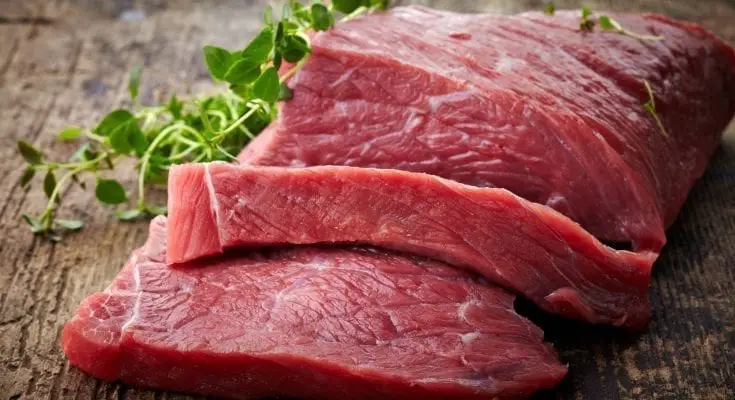Ostrich meat might not be a common sight on many restaurant menus or supermarket shelves. But all that is set to change now we’re waking up to the fact that ostrich meat offers the rich flavor of red meat but with far fewer calories.
For the health-conscious amongst you, this might sound like the perfect compromise. After all, a meat that’s low in fat and high in flavor is the dream, right? And that’s just one of the many benefits of ostrich meat. Although, if you’re yet to try ostrich meat you might be curious about the taste and how you can incorporate it into your favorite dishes.
So, what is ostrich meat like anyway? Read on to find out more!
1. The Healthiest ‘Red’ Meat
Ostriches are the largest birds in the world, and although they’re flightless, they’re also the fastest, with an ability to run over 40 mph. Bring birds – albeit unusual ones – their meat is classed as poultry. Ostrich meat also has similar nutritional values to ‘white’ meats like chicken and turkey.
So how can ostrich meat be the healthiest ‘red’ meat? Although ostrich meat is poultry, it looks like a ‘red’ meat thanks to its high levels of myoglobin, a protein that turns red when oxygen enters the muscle. Ostrich meat also has a taste and texture similar to beef.
But, unlike beef, which can contain high levels of intramuscular fat, it’s easy to remove the fat in ostrich. Ostrich meat is also lower in saturated fat than even the leanest cuts of beef. And, as you’re sure to see advertised wherever you see ostrich meat for sale, it’s low in cholesterol, and packed with iron, protein, and vitamin B12.
2. Versatile
Now we’re clear on the many health benefits of ostrich meat, you’re probably wondering, ‘how can you eat ostrich meat?’ The answer is, any way you like!
Ostrich meatballs? You got it! Ostrich chili? Of course! Ostrich Sloppy Joes? No problem! Ground ostrich meat is extremely versatile, meaning that you can use it in any recipe in place of lean ground beef. Or indeed, in place of pork, venison, bison, turkey, and more.
You can also cut up ostrich filets and use them in stir-fries and stews. Or, you might prefer ostrich steaks or a roasted leg for the full flavor experience. That said, since ostrich has a low fat content, cooking it for too long can leave the meat leathery rather than juicy. To avoid this, we’d recommend using a roasting bag when preparing a roasted ostrich leg. And when cooking ostrich steaks, place them over a high heat before finishing them off with a low flame.
3. More Sustainable Than Beef
Its impressive nutritional values aren’t the only reason many people consider ostrich meat to be an appealing alternative to beef. It’s also a far more sustainable source of quality animal protein.
Unlike cows who require a lot of space to graze, farm-raised ostriches need very little land. And, since ostriches are non-ruminant herbivores, they produce a lot less methane than cows and other ruminant animals. Methane emissions from livestock are one of the largest contributors to climate change. As such, the farming of ostriches is far less harmful to the planet than cattle farming.
Ostriches also eat a lot less than cows and provide more meat at a faster rate. Female ostriches produce at least 40 chicks each year, with every one of these reaching marketing age within around 400 days from conception. In comparison, cows give birth once per year at most and a calf takes about 650 days from conception to be ready for the market.
Taking these differences into account, it takes an average of three times as much feed to produce a pound of beef than a pound of ostrich meat. What’s more, a 250-pound ostrich provides about 130 pounds of meat (52 percent of its total weight) compared to around 490 pounds from a 1,200-pound cow (41 percent of its total weight).
4. Hormone and Antibiotic-Free
Another contentious topic in the meat world is the use of hormones and antibiotics during the farming process. One of the advantages of ostrich meat over beef is that farmers never administer hormones to poultry.
The use of antibiotics is also very rare for farm-raised ostriches. As such, wherever you buy your ostrich meat from, you can feel safe in the knowledge that the ostriches were raised in a way that aligns with human and animal health.
5. Delicious Taste
We know what you’re thinking, all those benefits and reasons to eat ostrich meat sound great, but what does ostrich meat taste like?
We’ve mentioned that ostrich meat is more like beef than poultry in terms of taste and texture, with many people unable to tell the difference between ostrich meat and a prime cut of lean beef. In short, ostrich meat is delicious and full of flavor, with a rich and meaty depth that will have you converted from the first bite.
As you might expect, the appeal and limited supply of ostrich meat make it quite expensive. The average ostrich meat price is around $20 for an 8-ounce filet, while ground ostrich meat comes in at $18 per pound. But trust us, it’s worth every cent!
Your Guide to the Benefits of Eating Ostrich Meat
Whether you’ve always wondered ‘what is ostrich meat like?’ or the thought of eating ostrich had never even crossed your mind, we’re sure all of you are keen to try ostrich meat now!
And, as these facts and benefits show, from its low levels of saturated fat to its versatility, there’s a lot of reasons to sample this unique meat for yourself.
For more interesting insights and eye-opening facts, be sure to check out our other blog posts!



